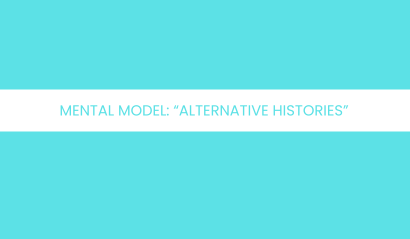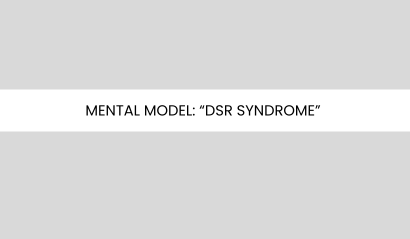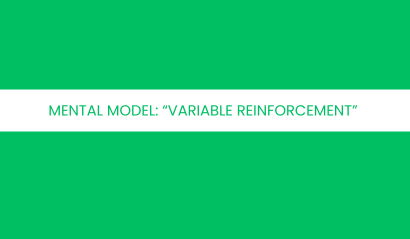Mental Model: Contrast Effect
Have you ever walked into an air-conditioned room after being in the scorching sun and felt like it was freezing? Or tasted a mildly sweet dessert after something extremely sugary and found it bland? These experiences are examples of the contrast effect, a psychological phenomenon that impacts our perception by exaggerating differences between two consecutive experiences.
The contrast effect plays a crucial role in decision-making, marketing, hiring, and everyday judgments. Understanding this effect can help us make more rational choices, improve business strategies, and avoid cognitive biases. In this post, we will explore the origins of the contrast effect, its implications, real-world examples, and strategies to mitigate its influence.
Origins of the Contrast Effect
The contrast effect is rooted in psychology and perception science. The concept was first explored by Ernst Weber and Gustav Fechner in the 19th century. Their work on Weber-Fechner Law suggested that human perception of change is relative rather than absolute. In other words, our minds evaluate things in relation to what came before rather than on an objective scale.
Further research by psychologists like Leon Festinger (known for cognitive dissonance theory) and Daniel Kahneman (known for prospect theory) expanded on this concept. They demonstrated that people are prone to contrast-based judgments in a variety of fields, including finance, relationships, and social interactions.
The contrast effect is a cognitive bias, meaning it unconsciously skews our thinking. By understanding its mechanisms, we can become more aware of how our judgments might be influenced.
How the Contrast Effect Works
At its core, the contrast effect occurs when our perception of something is distorted due to comparison with something else. If two items are presented in sequence, the second item tends to be perceived as more extreme than it really is, simply because it is being compared to the first.
For example:
- If a person lifts a heavy box first and then lifts a lighter box, the second box will feel much lighter than it actually is.
- If someone meets a rude person and then a moderately polite one, they may perceive the second individual as extremely kind, even if their behavior is just neutral.
This effect is especially prevalent in decision-making and marketing, where businesses use intentional contrast techniques to influence consumer choices.
Real-World Examples of the Contrast Effect
The contrast effect plays out in various aspects of life, from psychology and business to relationships and sports. Here are some key examples:
1. Retail Pricing & Sales
Retailers frequently use the contrast effect to make prices seem more attractive. Consider these scenarios:
- A store marks up an item and then offers a discount, making customers feel like they are getting a great deal.
- A salesperson first shows an expensive item, followed by a moderately priced item. The second item seems like a bargain in comparison, even if it is still expensive.
2. Job Interviews & Hiring Bias
Hiring managers might unconsciously evaluate candidates relative to the one they interviewed previously rather than based on objective criteria.
- If an interviewer meets a poor candidate first, the next candidate may seem exceptionally strong, even if they are just average.
- If a recruiter evaluates a star applicant first, the next person may seem less competent in comparison.
3. Relationships & Social Perception
People often perceive attractiveness, kindness, or intelligence based on contrast rather than absolute terms.
- If a person goes on a bad date, their next date may seem much better than they actually are.
- A team leader might be perceived as highly competent only because their predecessor was ineffective.
4. Real Estate & Sales Psychology
Real estate agents frequently show a run-down or overpriced house first so that subsequent properties seem like a better deal.
- A mediocre house might appear fantastic if the first one shown was in terrible condition.
- Car salesmen often show a premium model first, making the lower-priced one feel like a steal.
5. Performance Evaluations
The contrast effect can affect how performance is judged in workplaces, sports, and education.
- A student might seem smarter if they follow a weak presenter in a class presentation.
- An athlete’s performance might be judged more favorably if their competitor underperforms first.
How to Avoid the Contrast Effect
While the contrast effect is a natural cognitive bias, we can minimize its influence in various ways:
1. Use Objective Criteria for Evaluation
To counteract contrast bias, always use standardized measures rather than relying on relative comparisons.
- In hiring, use structured interviews with scoring rubrics.
- In shopping, compare items based on features and actual value, not just price differences.
2. Take a Break Between Evaluations
Spacing out decisions can help reset your perception.
- In job interviews, leave a 15-minute gap between candidates.
- When making big purchases, wait a day before deciding.
3. Be Aware of External Influences
Simply recognizing that the contrast effect exists can help you counteract it.
- When shopping, ask yourself: “Would this seem like a good deal if I saw it alone?”
- In performance reviews, focus on an individual’s past performance, not just recent comparisons.
4. Reframe the Decision Context
Try to see things in absolute rather than relative terms.
- If judging a presentation, compare it to a fixed standard rather than the previous speaker.
- In negotiations, evaluate a deal based on market value, not just the last offer you received.
5. Seek Multiple Perspectives
Getting input from others can help balance contrast bias.
- In hiring, have multiple interviewers score candidates independently.
- In purchasing decisions, seek advice from people who haven’t seen the other options.
Conclusion
The contrast effect is a powerful cognitive bias that can distort our perceptions and decisions. Whether in marketing, hiring, social interactions, or financial choices, this phenomenon plays a key role in shaping how we judge things.
By understanding the contrast effect, we can train ourselves to be more objective in our evaluations. Simple strategies like using objective criteria, spacing out decisions, and seeking diverse perspectives can help us overcome this bias.
So, the next time you feel like something is unusually great (or terrible), pause for a moment. Ask yourself: Am I seeing this objectively, or is it just the contrast effect at play? Awareness is the first step to making better, more rational decisions.







